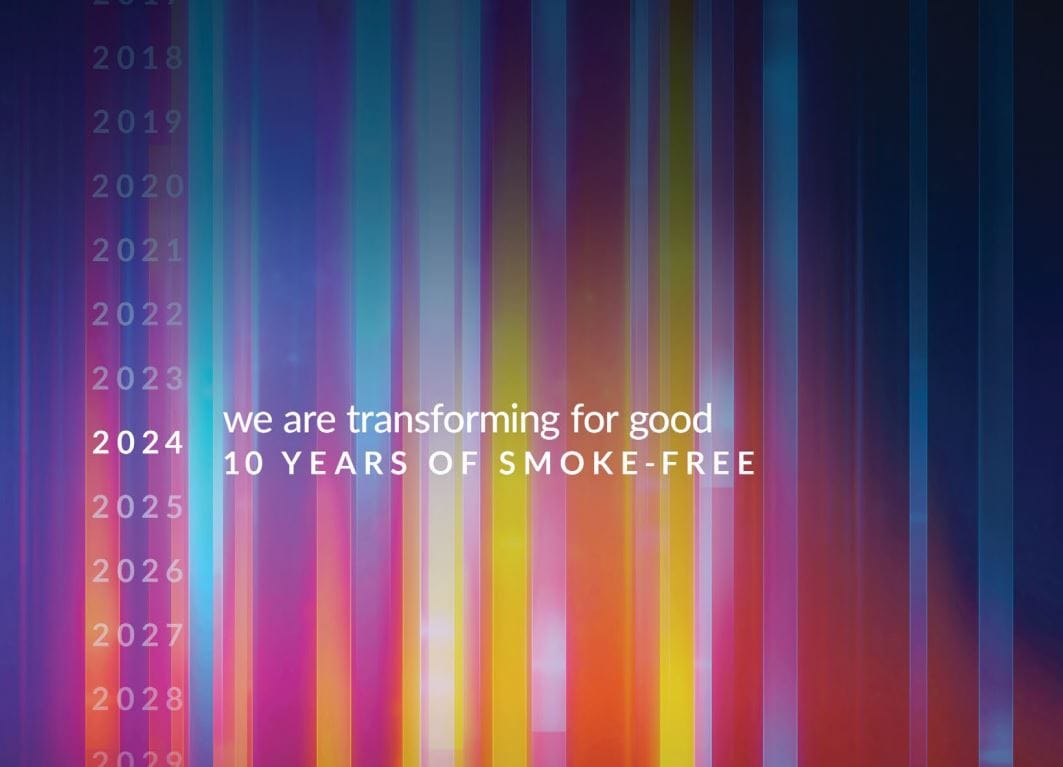In 2024, we carried out a global sustainability materiality assessment (SMA) that embedded the concept of double materiality, as per requirements set by the EU Corporate Sustainability Reporting Directive (CSRD). This entailed looking at the positive and negative impacts our actions have (or may have) on people and the environment, as well as how sustainability issues can represent risks and opportunities for our business. Accordingly, our assessment was twofold:
- An outward impact assessment (or “impact materiality”)
- An inward risk and opportunity assessment (or “financial materiality”)
Our previous assessments provided us with a robust foundation. In particular, our last comprehensive SMA in 2021 had already pioneered the concept of “double-materiality,” while our 2023 refresh served to assess the continued relevance of our priorities while also identifying areas to evolve in our process to prepare for CSRD expectations.
Governance
We leveraged existing and established new robust internal control procedures to make sure the SMA process met the required standards of corporate governance. We documented the principles for conducting a CSRD-compliant SMA in an internal handbook, embedding controls to ensure process robustness and auditability. Seeking objectivity, credibility, and validity of the process and results, the assessment was also supported by the guidance of an independent third-party expert in the field with whom we had already collaborated in previous SMA exercises.
Our Sustainability team orchestrated the overall process, from design to execution and validation. The Sustainability team involved PMI’s Enterprise Risk Management (ERM) function, leveraging their knowledge and expertise in financial materiality of risks and opportunities. The assessment involved extensive internal stakeholder engagement with representatives of various business functions and seniority levels. Through workshops and one-on-one discussions, the Sustainability and ERM teams gathered diverse perspectives and insights from across the organization. This collaborative approach, beyond solidifying the SMA process, also fostered a culture of sustainability awareness within the company.
The review and validation of the SMA methodology and outcome followed our overall management process for sustainability in the company. PMI’s Sustainability Committee (composed of members of PMI’s senior management team) approved the SMA methodology and pre-determined materiality thresholds early in the process. In meetings with members of PMI’s Sustainability Committee and PMI’s Board of Directors, we discussed and validated the outcome of the SMA at the end of 2024.
Approach
We relied on a five-step approach for the SMA. We provide below a rundown of each step and some practical insights.
1. Preparation phase
We started by mapping our value chain into four main categories (upstream, own operations, downstream, and end of life). We then linked these categories with primary activities and key processes. We also developed a stakeholder engagement plan to incorporate the perspectives of our stakeholders.
Our approach to external stakeholder engagement for the SMA relied heavily on existing practices and ongoing stakeholder dialogue, complemented by tailored engagements organized to meet specific SMA needs. During this preparation phase, we also crafted the methodology for assessing impacts, risks, and opportunities (IROs) and scoring them. This enabled us to pre-determine materiality thresholds for both the outward impact assessment and the inward risk and opportunity assessment, determining those IROs that would be considered material.
2. List of potentially relevant sustainability matters
We listed potentially relevant sustainability matters (i.e., topics, sub-topics, and sub-sub-topics) that could be connected to impacts, risks, and opportunities arising across our value chain.
3. Definition of impacts, risks, and opportunities
We cataloged key impacts, risks, and opportunities (IROs) connected with the potentially relevant sustainability matters.
To do this, we looked at both direct and indirect impacts on people and the environment, arising from our own operations or linked to our business relationships along our value chain.
We further recognized that these impacts could be positive or negative in nature. Moreover, we also classified those impacts as actual or potential depending on whether or not they occurred over the previous reporting period.
We also cataloged risks and opportunities that affect or could affect our business continuity. We compiled the list of IROs by consulting with our internal subject matter experts and performing desktop research leveraging external and internal information.
We sought to use sources that reflect stakeholders’ views. For instance, for social matters, we leveraged prior human rights saliency mapping and human rights impact assessments that had been compiled based on consultation with right holder groups.
4. Assessment of impacts, risks, and opportunities
After describing sustainability topics in terms of impacts, risks, and opportunities (IROs), we assessed them. The assessment of IROs was broken in two—different for determining impact materiality (outward impact) and financial materiality (inward impact). While assessing IROs, we assigned them with the most relevant time horizon(s), i.e., the timeframe when they are expected to materialize (short, medium or long term).- Inward risk and opportunity assessment: To determine financial materiality, we relied on our enterprise risk rating methodology to evaluate risks and opportunities. This integration into our company’s enterprise risk management (ERM) framework helped create better synergies with our company’s overall assessment of risk, thus ensuring that sustainability-related risks were assessed in a consistent manner with other types of risks and to foster a culture of proactive risk management that is aligned with our sustainability objectives. We evaluated how severe risks and opportunities could be and how likely they were to occur. The assessment of severity considered financial, operational, reputational, and business strategic effects. Both the severity and the likelihood were assessed on a 4-point scale.
- Outward impact assessment: To determine impact materiality, we followed guidance provided by the European Financial Reporting Advisory Group (EFRAG) while leveraging our previous SMA and seeking uniformity where possible with the approach for the inward assessment. To determine negative impacts, we assessed their severity based on scale, scope, and whether they could be remediated. For positive impacts, we focused only on scale and scope. We also considered likelihood, or how likely they were to manifest. We used a 4-point rating to assess the severity and likelihood.
We did not consider how we have or might remediate or respond to negative impacts and risks after they happen. However, we accounted for proactive and preventive work already ongoing in our company to mitigate or avoid the manifestation of risks or negative impacts.
The evaluation of IROs involved a mix of quantitative and qualitative methods. Internal expert consultations and judgement, supported by a range of inputs such as internal databases and past impacts and risks assessments, industry reports, or external publications, formed the backbone of our analysis. We performed targeted external stakeholder interviews seeking deeper insights into specific areas where available information and data were limited. We ensured a constant flow of feedback loop throughout the assessment process to understand the connections between our impacts and dependencies and the arising risks and opportunities.
5. Formulation of the materiality overview
After assessing the IROs, we applied the pre-determined thresholds to differentiate between material and non-material IROs.
We plan to assess the relevance of our 2024 SMA outcome on an annual basis and refine the process as needed, incorporating learnings, best practices, new sustainability insights, and feedback from stakeholders.
As we completed this new comprehensive global SMA at the end of 2024, we are currently focusing on developing a revamped sustainability strategy that will extend beyond the 2025 horizon. In 2025, we will leverage the insights gained from the SMA to shape this new strategy, ensuring it aligns with our long-term sustainability goals. We plan to provide further details on the SMA process and its outcomes, as well as how they will shape our updated strategic framework during 2025 and in our next report.
Our 2024 Integrated Report continues to be informed by the outcomes of the SMA conducted in 2021 and our current strategy, which guides our efforts until the end of 2025.
Localization
We relied on the results obtained from the global SMA, to then do localized assessments that would calibrate and reflect accurately what matters would be material for our affiliates in scope of CSRD. This will be the case, as of 2025, for our Czech affiliate, Philip Morris ČR a.s. (PMCR), as it is publicly listed in the EU, and will have to issue its CSRD-statement then. For further details on methodology and outcomes pertaining to our Czech affiliate, please refer to the PMCR Annual Report that will be issued shortly and includes its CSRD statement.Share this page
This online content about our Integrated Report should be read in conjunction with PMI’s Integrated Report 2024. This report includes metrics that are subject to uncertainties due to inherent limitations in the nature and methods for data collection and measurement. The precision of different collection and measurement techniques may also vary. This report includes data or information obtained from external sources or third parties. Unless otherwise indicated, the data contained herein cover our operations worldwide for the full calendar year 2024 or reflect the status as of December 31, 2024. Where not specified, data comes from PMI financials, nonfinancials, or estimates.
Unless explicitly stated, the data, information, and aspirations in this report do not incorporate PMI’s wellness and healthcare business, Aspeya. Regarding the Swedish Match acquisition, completed late 2022, unless otherwise indicated, this report includes information pertaining to its sustainability performance. Please also refer to "This report at a glance" on page 2 of the PMI’s Integrated Report 2024 for more information. Aspirational targets and goals do not constitute financial projections, and achievement of future results is subject to risks, uncertainties and inaccurate assumptions, as outlined in our forward-looking and cautionary statements on page 206. In PMI’s Integrated Report 2024 and in related communications, the terms “materiality,” “material,” and similar terms are defined in the referenced sustainability standards and are not meant to correspond to the concept of materiality under the U.S. securities laws and/or disclosures required by the U.S. Securities and Exchange Commission.



